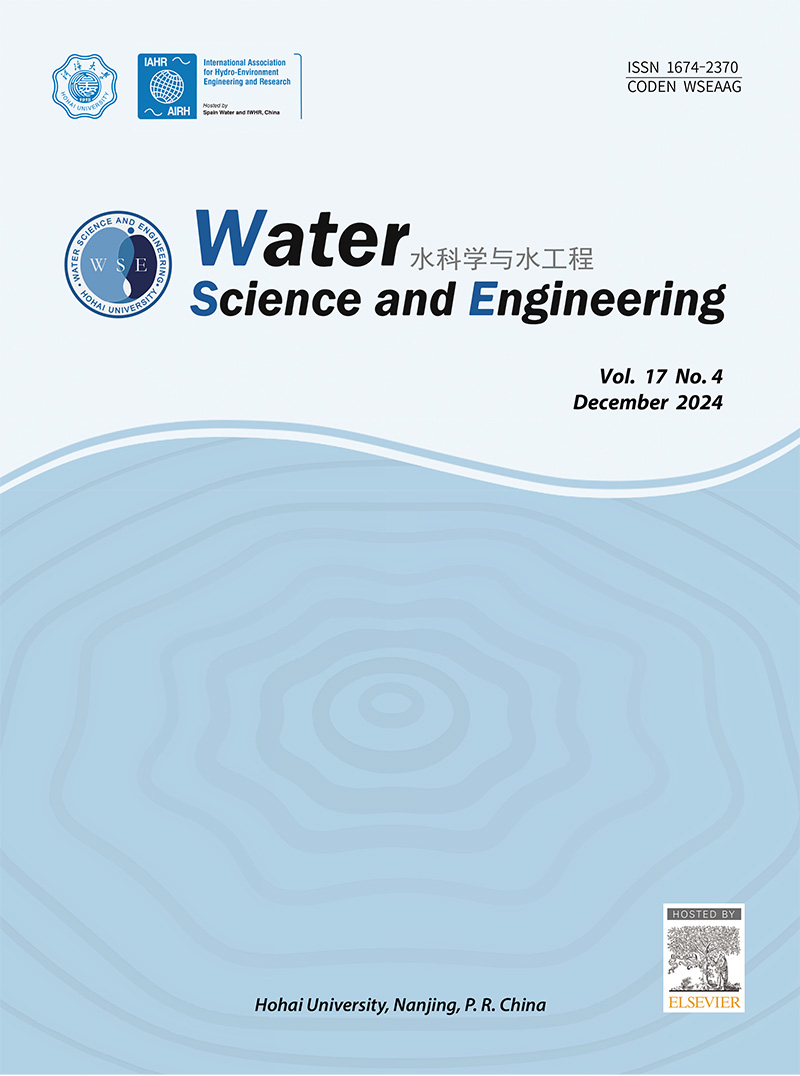Properties of dredged material and potential scope of its beneficial use: A case study of the Pussur River in Bangladesh
IF 4.3
Q1 WATER RESOURCES
引用次数: 0
Abstract
The Pussur River, an important river in Bangladesh, requires approximately 6 × 106 m3 of sediment to be dredged per year. At present, this dredged material is mainly dumped on the nearby agricultural and fish-cultivation lands, causing a reduction in productive land and producing negative impacts on people's livelihoods. This study aimed to investigate the engineering and environmental properties of the dredged sand of the Pussur River and evaluate the viability of its potential uses in different sectors. Bed sediments from the Pussur River and dredged material from disposal sites were collected, and laboratory investigations were performed. The test results showed that the dredged material of the Pussur River mainly consisted of fine sand with a fineness modulus ranging from 0.58 to 0.72 and could be classified as poorly graded sand according to the Unified Soil Classification System. This sand was also found suitable for land development, with a fair to poor suitability rating. Given the low concentration of heavy metals (at uncontaminated/slightly contaminated levels), the dredged sand might be safely used for land reclamation, landfill cover, and horticultural purposes, or else for other geotechnical applications without further treatment. After washing/leaching, the dredged sand could also be used as a partial replacement for local sand in concrete works. Moreover, there is a possibility of exporting the dredged sand to Singapore and the Maldives as filling material. These findings will help policymakers design dredging projects with a proper spoil management plan accounting for the dredged material's beneficial use.
疏浚材料的特性及其有益利用的潜在范围:孟加拉国普苏尔河案例研究
普苏尔河是孟加拉国的一条重要河流,每年需要疏浚约 6 × 106 立方米的沉积物。目前,这些疏浚物主要被倾倒在附近的农田和鱼类养殖地,导致生产用地减少,对人们的生活造成负面影响。本研究旨在调查普苏尔河疏浚沙的工程和环境特性,并评估其在不同领域的潜在用途的可行性。研究人员收集了普苏尔河的河床沉积物和弃置场的疏浚材料,并进行了实验室调查。测试结果表明,普苏尔河的疏浚物主要由细沙组成,细度模数在 0.58 至 0.72 之间,根据 "统一土壤分类系统",可归类为等级较差的沙。这种沙土也被认为适合土地开发,适宜性评级为一般至较差。由於重金屬含量低(處於未受污染或輕微污染的水平),疏浚後的海砂可安全地用作填海、堆填區覆蓋及園藝用途,或其他土力工程用途,而無須作進一步處理。经过清洗/浸出后,疏浚沙还可在混凝土工程中部分替代本地沙。此外,还可以将挖出的沙子作为填充材料出口到新加坡和马尔代夫。这些研究结果将有助于决策者在设计疏浚工程时,考虑到疏浚材料的有益用途,制定适当的弃置物管理计划。
本文章由计算机程序翻译,如有差异,请以英文原文为准。
求助全文
约1分钟内获得全文
求助全文
来源期刊

Water science and engineering
WATER RESOURCES-
CiteScore
6.60
自引率
5.00%
发文量
573
审稿时长
50 weeks
期刊介绍:
Water Science and Engineering journal is an international, peer-reviewed research publication covering new concepts, theories, methods, and techniques related to water issues. The journal aims to publish research that helps advance the theoretical and practical understanding of water resources, aquatic environment, aquatic ecology, and water engineering, with emphases placed on the innovation and applicability of science and technology in large-scale hydropower project construction, large river and lake regulation, inter-basin water transfer, hydroelectric energy development, ecological restoration, the development of new materials, and sustainable utilization of water resources.
 求助内容:
求助内容: 应助结果提醒方式:
应助结果提醒方式:


